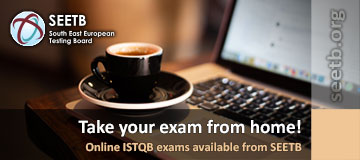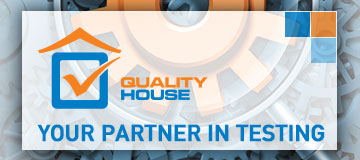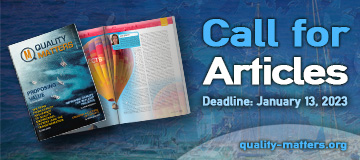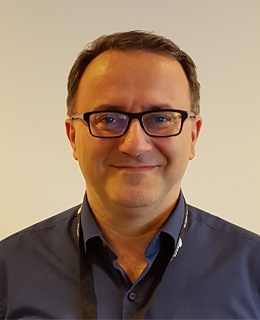
Pablo Garcia Munos
Sharpness AB, SwedenPablo Garcia started as a tester in 1996 for Ericsson.
After passing through roles like Test Manager, Project Manager, Program Manager he worked as Total Program Manager managing the complete the Ericsson Development in India.
Now, over 20 years later he has run over 50 assignments besides running his own test companies.
After working as a CEO for a international consultancy he has now started his 5:th company “Sharpness” with specialist in development and testing.
Pablo has spoken at national and International Conferences like NFI, Test management Forum, many SIGISTS and Star West. He has also given Testing courses since 2001 and released a book on test design.
Amongst other he has educated over 400 nurses in acceptance testing during the last 8 years.
Making Agile Work, from the bottom to the top
Reading the Agile Manifesto gives clear rules in how to create “good software” and stated there. But the word Test is not stated anywhere in the Agile Manifesto so is the best software made without testing?
Well, with cross functional teams and pointing at Agile many people seem to think that.
Pablo has worked with Agile organizations since the real break through in 2004 and has many tips and trick about what It takes to really master the art of creating software.
Join him in his presentation where he explains what it takes from the bottom to the top for Agile development to truly work.
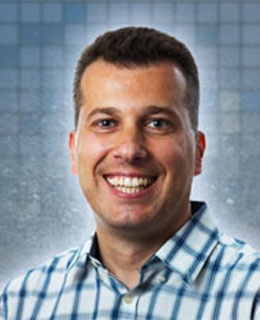
Predrag Skoković
Quality House, SerbiaPredrag Skokovic is professional software developer and software tester with many years of experience in the IT industry. He graduated at the Faculty of Sciences, University of Novi Sad, Department of Mathematics and Informatics. He worked for several semesters as a demonstrator at the Faculty of Mathematics, after which he spent some years in a regional bank as system administrator. Then, for more than a decade, Predrag was building his knowledge and experience in a software development company, where he became interested in the field of quality control.
By applying an active approach, while leading development teams in numerous international projects, he worked hard to raise awareness about the necessity of including software testing activities early, from the idea to the realization of the software product. Through many years of dedicated work, he was involved in technical automation projects in the field of medicine and petrochemistry, as well as in the finance and banking sector. The initial enthusiasm to share knowledge has never left him, therefore he has become a regular (and rewarded) speaker at international conferences dedicated to software testing and guest lecturer at the University of Novi Sad.
Today, after years of engagement in the world of software testing, Predrag is member of the South East European Testing Board (SEETB), a professional consultant and accredited ISTQB trainer, co-founder and president of the Board of Test'RS Club, a community of professional software testers and co-founder and managing director of Quality House in Serbia.
Automation in Testing - Design Patterns for Optimal Approach
In today’s world of software development, where some variation of agile methodology is applied, test automation is seen as an answer to achieve high test coverage of code, functions or features of the system under test (SUT). By implementing and executing a number of automated tests found in regression test suite, it is believed that the regression will be put under control, leaving valuable time for testers to explore newly implemented parts of the application. And this is usually done without defining and implementing a proper, adequate approach to test automation. Of course, this works well in the beginning, with small projects of low complexity. However, the initial approach to test automation needs to change by increasing the size of the application, to evolve, in order to accommodate the development of the SUT.
At this point knowledge and experience about different approaches to test automation comes to the fore. Although several approaches to test automation have been recognized, in practice it is usually some sort of hybrid approach that saves the day. By understanding what is needed for success in test automation, the development team can adjust to shifts in context and take the test automation effort in a new, optimal direction.
During this tutorial attendees will not only hear about different approaches to test automation, but will also exercise a lot on how to design different test automation architectures with the intent to apply the optimal test automation approach.
NOTE: Attendees should bring their laptops. Prerequisites will be announced to registered attendees well before the course date in order to prepare the environment.
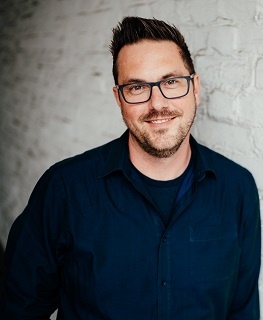
Rob Lambert
Cultivated Management, UKRob Lambert is on a mission to make management more interesting, rewarding, and fun. It's an uphill struggle.
Rob started his career as a software tester, became a manager, then VP of Engineering, and then made the logical move sideways to HR, before setting up his own management consulting company.
When he's not talking all things management and business agility, he writes books, help parents remain employable at parentbrain.com, takes photos of cars, explores the English countryside with his family, and writes TV and film scripts.
His biggest achievement to date is surviving parenthood to three boys. Interestingly, he hopes they grow up with their mother’s bone structure as Rob has broken almost every bone in his body and spent most of his teenage years at the Accident and Emergency hospital.
You can find Rob at www.cultivatedmanagement.com and on Twitter @rob_lambert.
Embracing the diversity of communication styles
We all have different preferences and styles when it comes to communication. Some of us crave detail, plans and carefully considered communication. Some of us prefer inspiring stories and simple ideas, so we can fill in the rest of the detail in our own minds. Some of us are more abrupt, others more inclusive, whilst others still are quiet in making our ideas heard. Some of us are more passive in our communication styles, some of us are more assertive. We are all different. Thankfully.
Yet in our world of work there seems to be a desire to form us all in to highly engaging, outgoing, assertive and empathetic employees. Few of us are naturally built this way when it comes to communication.
In this workshop we will use the DISC tool to uncover our natural preferences for behaviours and communications. We will then use this to explore our strengths and inherent weaknesses, before covering how our preferences can often cause conflict with those who communicate differently.
We’ll also then move on to understanding when our communication is holding us back and what we can do about it.
How can we use our natural styles to become effective at work?
How can we work with others who’s approach to communication seems so alien to us?
And how can we embrace our differences to build high performing, diverse, and respectful teams?
In other words. How can we appreciate what others bring to the table and ensure our own communication preferences are appreciated too? This workshop is about embracing our differences, and working together to support and nurture each other, and enhance our effectiveness at work.
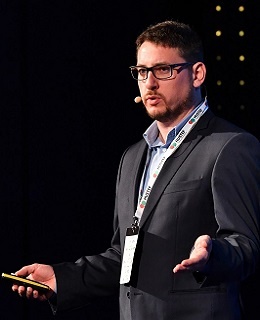
Szilard Szell
Eficode Oy, FinlandSzilard is a Senior Consultant of DevOps Practice for Telco Business at Eficode. Szilard has a proven track record in large scale Telco DevOps Transformation Programs, as well as an assessor, trainer, facilitator and coach in Test Automation and Testing Process improvement area. As a SAFe 5.1 SPC He is running successful training and coaching sessions.
As a conference speaker Szilard is ready to share his view and knowledge with Testing Fellows, that is based on 22 years of industry experience and multitude of certificates held.
To give back to the Testing Community, Szilard is active in ISTQB. He is also an active member of HUSTEF, UCAAT and TheDevOps Conferences Programme Committee, and in 2021 He was part of the PC of EuroSTAR.
Let's build a Continuous Quality Assurance Strategy around your CI/CD pipeline
Building a Test Strategy in DevOps is not only about Test Automation, but how built-in-quality can be achieved in all steps of the SW development, within and outside of your CI/CD pipeline.
What is the goal of your testing? What quality aspects are more and what are less important for your domain? What are the major risks? What testing steps should be included in a Continuous Integration/Continuous Delivery pipeline, and where to focus with Exploratory Testing? How to utilize the new QA opportunities available by applying DevOps practices? Don’t just string together existing manual processes! – in this tutorial, we will use simple, collaborative tools to design something better!
The interactive workshop will help teams to learn how QA is extended to the left and to the right in DevOps, how to design QA pipeline with simple cards and what other testing related activities to be agreed on, to have a full test strategy.
In this hands-on workshop for teams of 5-6 people, we will use several card games, as well as Sticky notes to identify parts of a Test Strategy and to design a CI/CD pipeline into its core.

Michael Bolton
DevelopSense, CanadaMichael Bolton is a consulting software tester and testing teacher who helps people to solve testing problems that they didn’t realize they could solve. In 2006, he became co-author (with James Bach) of Rapid Software Testing (RST), a methodology and mindset for testing software expertly and credibly in uncertain conditions and under extreme time pressure. Since then, he has flown over a million miles to teach RST in 35 countries on six continents.
Michael has over 30 years of experience testing, developing, managing, and writing about software. For over 20 years, he has led DevelopSense, a Toronto-based testing and development consultancy. Prior to that, he was with Quarterdeck Corporation for eight years, during which he managed the company’s flagship products and directed project and testing teams both in-house and around the world.
What Do You Expect? How to Avoid Being Fooled in Testing
Critical thinking is the kind of thinking that specifically looks for problems and mistakes. Regular people don't do a lot of it. However, if you want to be a great tester, you need to be a great critical thinker. Critically-thinking testers save projects from dangerous assumptions and ultimately from disasters. The good news is that critical thinking is not just innate intelligence or a talent—it's a learnable and improvable skill you can master. Michael Bolton shares the specific techniques and heuristics of critical thinking and presents realistic testing puzzles that help you practice and increase your thinking skills. Critical thinking begins with just four questions—Huh? Really? And? So?—that kick start your brain to analyze specifications, risks, causes, effects, project plans, and anything else that puzzles you. In this interactive, hands-on session, we’ll practice critical thinking skills, study and analyze product behaviors, and experience new ways to identify, isolate, and characterize bugs.
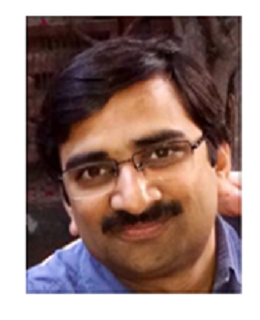
Vipul Kocher
testAIng.com, IndiaVipul is the President of Indian Testing Board, the ISTQB board for India. He is the founder of testAIng.com – an AI model assurance product company and Verity software – a training company. He is also the convener of the STeP-IN forum, a not-for-profit forum for software testers.
He has 26+ years of experience in various capacities with leading companies. Co-author of ISTQB syllabus on AI testing, he consults companies on how to test AI based systems and is currently engaged in researching and developing techniques for testing of AI-ML based systems.
He has won several awards including the best paper award at STAREast 2006 and the Logica CMG Triple Star Award for the most original contribution at EuroStar 2005. He has been a Keynote speaker at many testing conferences worldwide.
Cloud Migration Testing
While cloud has been in use for more than a decade, it is in recent years that large organizations have started migrating their legacy systems to the cloud. Whether it is simple rehosting or rearchitecting the application completely, some flavor or the other of migration seems to be happening.
In this tutorial we will take a look at various types of migrations and the types of tests that need to be performed for each type. The focus is on the coverage of cloud specific tests rather than generic tests. Both functional and non-functional tests will be covered in a cloud agnostic manner. There will be specific emphasis on data migration tests and testing of cloud native features such as microservices and containers. Resilience, scalability, multitenancy and disaster recovery tests will also be covered as part of the tutorial.
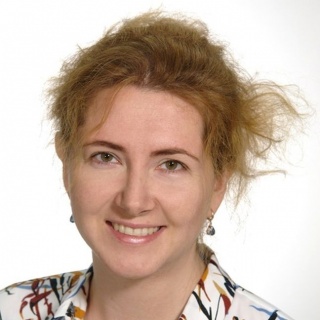
Maryna Didkovska
EPAM SystemsMaryna Didkovska is a Quality Engineering Director at EPAM Systems. As a Test Manager, Delivery manager and Software automation engineer, Maryna has managed teams to build scalable testing process on a projects with over 600 participants , develop testing ecosystems on Enterprise level, find solutions to quality architectural challenges, and coached others be experts and leaders. Being PhD in Software reliability domain, she leverages her academic background with hands-on work experience in software automation testing and programming to interact with team members and clients all over the globe to improve software quality continuously and drive digital transformations. Maryna is a regular speaker at technical and management conferences, covering a variety of testing topics.
Maryna is passionate about making quality improvements process transparent and trackable.
Testing governance and metrics. How to build transparent and manageable quality process on your project
Agile has simplified the life of development team a lot – we don’t need to create tons of documentation, feedback on any blocker and issue we get on daily basis, still huge amount of projects are behind the scheduler, have poor quality and overbudgeted.
Why the testing status shared on scrum meeting is not enough to manage the quality of the product, where is the missing puzzle? Many of us faced the situations that bugs are reported but not really processed – they stay in Backlog for months and only Prod issue becomes gamechanger. A lot of Test managers are surprised that even efficient testing process on team level doesn’t guarantee testing process on the project or program level.
In our tutorial you would get the knowledge of how to build the testing governance over several teams, establish measurable testing process, what metrics can help you to understand the actual quality of your product and persuade Product Owners and Customers to allocate bug fixes and quality improvements in Backlog and Sprint log properly, what is the cost of poor quality, how to measure it, and many other topics that can make your testing process more efficient.

Jan Grape
Crisp AB, SwedenJan made his first commercial software over 35 years ago in Stockholm, Sweden, as a teenager. He has worked as a programmer, usability engineer, team lead, software architect, manager, CEO, chairman of the board, agile coach, and more throughout his career.
Today, Jan focuses on helping companies form successful product development organizations and awesome workplaces where individuals and teams can excel.
Jan’s clients include Skype, Audi, iZettle/PayPal, Tobii, Cisco, Ericsson, SimCorp, Teradata, and numerous small and medium-sized businesses and startup companies.
Diversity and richness of inputs have always guided Jan, taking on different roles and viewpoints, but above all, working with people that are different from himself to broaden his perspective and learn from those who think differently.
Web: http://crisp.se/jan.grape
Twitter: @jngrp
LinkedIn: https://www.linkedin.com/in/jgrape/
Email: [email protected]
High performing teams
Research shows that software development is a team sport and not an individual endeavor. If that is the case, what makes a software development team really efficient? What do they do and who is on the team? We’ll cover topics like:
• Roles & responsibilities in delivering software products
• Creating engagement
• Building the right thing
• Building the thing right
• Being a team instead of a group of people

